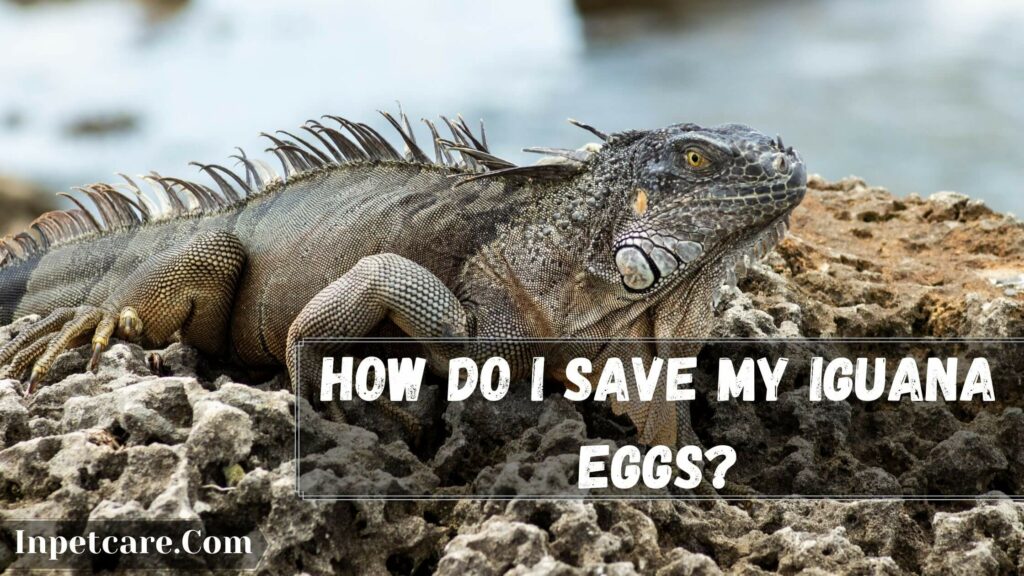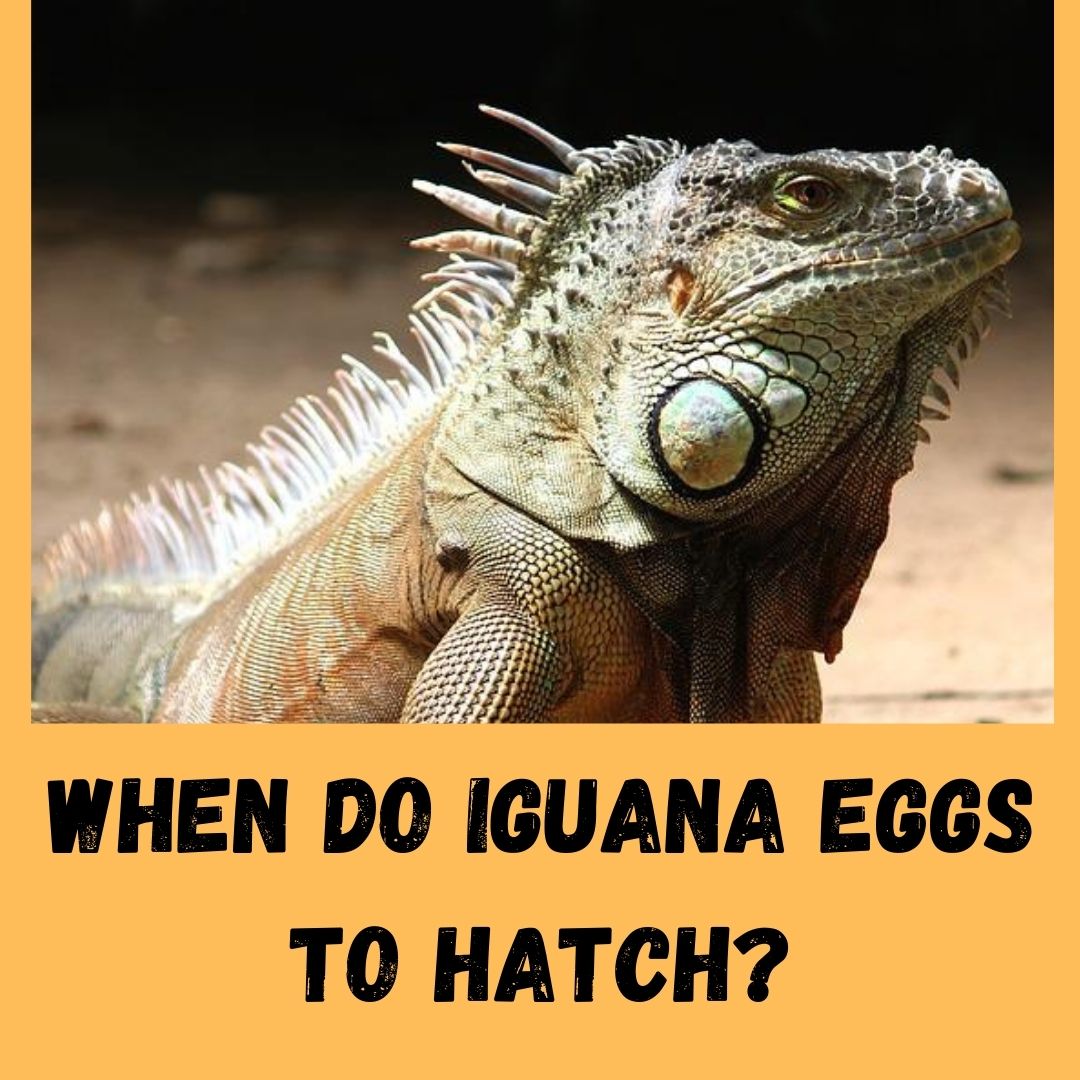Breeding an Iguana needs proper research and information to inherit, and it is essential to know what things you need to make the eggs hatch. In this article, we will take a look at the Iguana egg-laying process.
Therefore you will not get the answer to how long it takes for Iguana eggs to hatch but also how many eggs iguanas lay at a time. We will also look at some frequently asked questions like do Iguanas sit on their eggs or not. First, let’s start with knowing how long it takes for Iguana eggs to hatch.
Post Contents
- How Long Does It Take For Iguana Eggs To Hatch?
- How Long Does It Take For An Iguana To Lay All Her Eggs?
- How Many Eggs Do Iguanas Lay At A Time?
- What Month Do Iguana Eggs Hatch?
- Do Iguanas Sit On Their Eggs?
- How Do I Save My Iguana Eggs?
- What To Do With Infertile Iguana Eggs?
- How To Incubate Iguana Eggs?
- Conclusion
How Long Does It Take For Iguana Eggs To Hatch?

An iguana’s egg takes approximately 92-120 days to hatch in the wild and in captivity, only if the temperature is around 85-91° F. In an incubator, you can make them hatch faster than 90 days. Female iguanas start laying eggs in clutches after 45 days of sitting. If you leave their eggs on their own to hatch, it will take as long as 120 days of the surrounding temperature is favourable.
On its snout, each hatchling of Iguana is born with an egg tooth, also known as a carbuncle. All the hatchlings used these egg teeth to crack their way out of the eggshell. For the first couple of days, the hatchling will receive the nutrition directly from the eggs.
The egg will remain on the hatchling bodies for as long as 2-3 days while continuously providing food to them until it falls off on its own. On the other hand, the egg tooth, known as carbuncle, also falls off soon. Now let’s learn how long it takes for an iguana to lay all her eggs.
How Long Does It Take For An Iguana To Lay All Her Eggs?
After 65 days of mating, female iguanas start laying all their eggs while slowly depositing them into burrows that she constructs. They can take anywhere from half an hour to a day to lay all eggs. Depending upon the species of Iguana, they lay eggs in clutches containing 40 eggs on an average. A typical female green Iguana lays 22-71 eggs at a time.
The eggs of an Iguana usually come in a pale white colour with a leathery appearance. The size of the egg will be 1.5 inches long.On the other hand, the Blue Iguana, an endangered species, usually lays 1-21 eggs at one time in a clutch. If your iguanas accidentally mate in captivity, you could wind up with dozens of offspring very soon.
You can even discard the eggs if you don’t want so many offsprings. Talking about other species, Marine iguanas will only lay an egg between 1-and 6. One of the most common Iguana is a green Iguana that lays clutches each year. In the wild, female Iguana usually eggs in their caves and then move on. They typically dig burrows for nesting.
How Many Eggs Do Iguanas Lay At A Time?
At a time, Iguana laid eggs between 21-and 71 eggs, whereas blue iguanas laid eggs between 3-and 21. On the other hand, Marine iguanas lay eggs each year in a clutch of 1-6 eggs.
What Month Do Iguana Eggs Hatch?
At the end of the summer season, also known as the wet season, Iguana usually mates in the wild. The summer season seems suitable for iguanas to carry the eggs and lay them to incubate throughout the winter. Eggs need warm temperatures, and a place that is warm & hot is perfect for them to dig a hole for nesting, like in a yard that gets plenty of sunlight.
In addition, iguanas defecate and lay eggs throughout the residential areas making the owners deal with their poops and unsighted eggs. Female Iguanas create burrows to protect their hatchling. Let’s talk about: do iguanas sit on their eggs.
Do Iguanas Sit On Their Eggs?
No. Female Iguana don’t sit on their eggs. Instead, they will dig a burrow for nesting and lay all her eggs to incubate until they hatch on their own. After laying eggs, iguanas never return to their holes to see how hatchlings are doing. The baby iguanas or the hatchling are entirely on their own until they fully mature to come out and forage for food.
How Do I Save My Iguana Eggs?

If a female Iguana has laid eggs in captivity, you should fill a small container with clean and moistened bedding to use as a nest where their eggs can be buried. There are many types of bedding options to choose from, but reptile dirt or vermiculite bedding is suitable.
It would help if you considered placing the container in your under the heat light for her to dig. Sooner, female iguanas will start burying their eggs when they are finished if you want to handle the eggs’ wait until your Iguana is done laying all of them and bury the eggs before you take them.
Iguanas don’t look after their eggs, so it’s better if you put back your Iguanas in their separate or original enclosure.
What To Do With Infertile Iguana Eggs?
Yes. Iguanas also lay infertile eggs without the presence of a male. These eggs will be laid usually but can also become stuck. Do you know that dystocia or egg binding can be complex for differentiating an Iguana from a normal pregnancy? If an Iguana lays infertile eggs, it is safe to say that you can discard them.
Leaving the unfertilized eggs in their enclosure will decompose and emit a horrible smell over time. It is safe to throw them away. Iguanas also lay eggs when they are not fertile, squares of about 22-76 per year.
After 65 days of mating, the female Iguana deposit and lays all its pale cream coloured eggs into their nesting, which she digs near a warm place. If you discard their eggs, you are not going to cause any distress to your pet Iguana.
Whether it is fertilized or unfertilized eggs, throwing them away could also mean that they will hatch in a landfill or a garbage can. Therefore before throwing it away, let the eggs cool down before discarding them. I recommend you put the eggs in a freezer or refrigerator for 24 hours to ensure that the eggs are no longer alive. Therefore disposal will never mean the hatchlings to be born in the trash or a landfill.
How To Incubate Iguana Eggs?
Incubating an iguanas egg is easy if you follow all the steps mentioned below. You should know a good idea of getting started on hatching these lizard eggs. Let’s talk about the steps you need to follow to incubate an iguanas egg and make the hatchling come out as soon as possible.
Make Or Pick Your Incubator
Always choose that incubator that isn’t tricky to use or set. On the other hand, making an incubator is also an easy task if you have the right equipment. Make sure always to have one thermometer and hygrometer built in that helps you read the humidity and the temperature.
The temperature should be controlled between 59-104° F with the proportional thermostat for stable temperature regulation. LED heat indicator light with pressure controller and LCF display is a must for easy control over the incubation process.
This egg incubator ( Zoo Med Reptibator Egg Incubator ) comes with all the equipment needed for you to incubator your Iguana’s egg and make it hatch as soon as 90 days.
Wait For Your Iguana To Lay Eggs
If you are breeding Iguana yourself right after the summer season, then all you need is an incubator at home. It would help if you waited for your iguanas to lay all her eggs until she buried them in her bedding.
After mating, all animals get pregnant with eggs, especially reptiles like iguanas who often burrow them in soil. If your Iguana is done laying and burying all her eggs, you may want to take the Iguana out while you get the eggs out.
Interesting Further Reading
- 5 Humane Ways To Dispose Of Dead Iguana
- What Fruits Can Iguanas Eat? 2022 Updated List
- Best Tanks For Iguanas: What Size Tank For Iguana?
Move The Eggs Carefully
If a female Iguana is done laying all her eggs, it’s time to move them carefully. Avoid turning the eggs over or rotating them, as it can cause them to die before they hatch. It is essential always to handle them gently and keep them level the whole time you move them. As you move all the eggs into the incubator, be as gentle as possible.
Set Temperature
Once the eggs are in the incubator, set the temperature between 80-85° F. The incubator mentioned above is effective in tracking and adjusting the temperature automatically. With other options, you may check and adjust the heat manually.
To incubate the eggs, the temperature plays a critical aspect. Make sure to keep a close eye on the temperature even if it is automatically regulated. An incubator with automatic temperature adjust settings makes your life easier, but still, you may want to check it a few times a day.
Adjust Humidity Level
Make sure to set the humidity accordingly because eggs also need high humidity to hatch and grow. Humidity in the incubator should be around 70-75%. Always check the humidity level using a hygrometer.
Most of the incubators available in the market need your help with the humidity, like adding water to a pan at the bottom or another part of the incubator. If the eggs seem too dry, they could have issues.
Monitor & Check On Them
Check all the settings are correct, keep an eye on them. Keeping the eggs at a stable temperature at a reasonable rate is essential. Depending upon the type of incubator, you may want to keep an eye for mould on the exterior of eggshells.
If there is any mould in the outer parts of the eggshell, it could be due to getting too much direct moisture. It is best to lower the humidity level or damp dry to keep the mould down. Iguana eggs take around 90 days or 120 days to hatch if they are fertile. I hope now you know how to incubate Iguana eggs.
Conclusion
As soon as 65 days after mating, Iguana starts laying eggs at a clutch of 40 eggs on an average, depending upon the species. At the same time, some species of Iguana can lay as few as six eggs in a clutch at a time. An Iguana egg can take around 90 days to 120 days to hatch without proper incubation.
The incubator will help you make the eggs hatch as soon as 90 days during breeding. I tried to give you all the information about how long it takes for iguanas eggs to hatch and what to do with Unfertilized Iguana eggs. If you like our post, make sure to share it to help the others know what they should do with an iguanas egg if it is laid in the enclosure.

94% of pet owners say their animal pal makes them smile more than once a day. In 2007, I realized that I was made for saving Animals. My father is a Vet, and I think every pet deserves one. I started this blog, “InPetCare”, in 2019 with my father to enlighten a wider audience.
